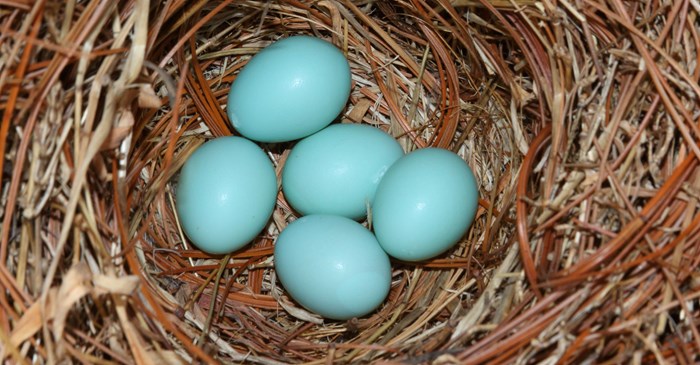The nesting cycle is a fascinating one to watch and think about, especially when analyzing the bird egg. We know that baby birds emerge from eggs, but why?
Why do birds lay eggs?
Birds are considered "oviparous" which means that they produce eggs that hatch after they have been laid by the parent. When thinking about the anatomy and physiology of a bird, it makes sense why they are a species that lays their eggs rather than carrying their embryos. Nature has gifted them the ability to fly, the extra weight would weigh them down!
Why are eggs different between species?
Eggs are what all birds have in common. They are oval-shaped and engineered by nature to prevent breaking under the weight of the adult bird. When you look at the eggs from species to species, and even within the same species - they vary widely in color, size, shape, and texture. Some may be brownish and spotted for the same reason why female birds don’t sport flashy plumage: they’re more difficult to see. Egg variations can be based on the region they call home and the environment they live. For example, researchers published a tested theory about egg color, explaining that the blue tint in some eggs protects the developing bird from harmful UV radiation, while white eggs may keep embryos from overheating in sunlight.
How long do they incubate?
The length of time songbirds spend on the eggs can vary — anywhere from 10 days to two weeks, according to the Cornell Lab of Ornithology. Hatchlings spend about the same amount of time in the nest before they are ready to leave. Woodpeckers and other larger birds may incubate up to three weeks. Incubation periods vary from species to species but as a general rule, the larger the bird, the longer the incubation period.
Some species stop at one brood a year, such as the American Goldfinch, the House Finch and the Black-capped Chickadee. Others have two or more, including the Northern Cardinal, the Eastern Bluebird, American Robin, and Mourning Dove. So if you’ve seen Mom and Dad at the feeder with fledglings in tow, shaking their wings, begging for a bite, you might see another brood in the near future!
If you happen to find their nesting place, keep your distance and fill those feeders with Lyric Supreme Mix. Its blend of high-quality, handcrafted seeds and nuts will help nesting birds maintain their energy levels during this demanding time.
